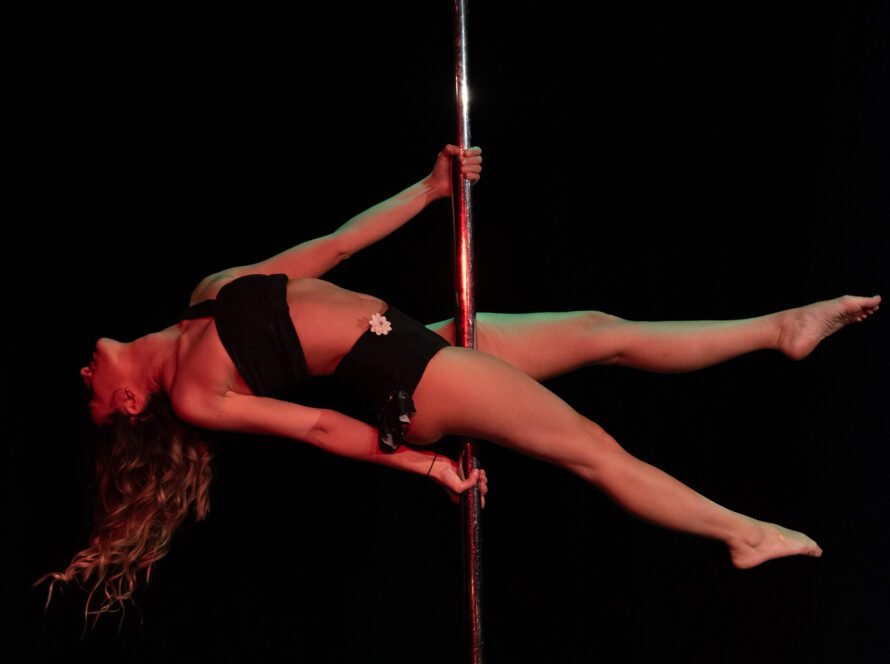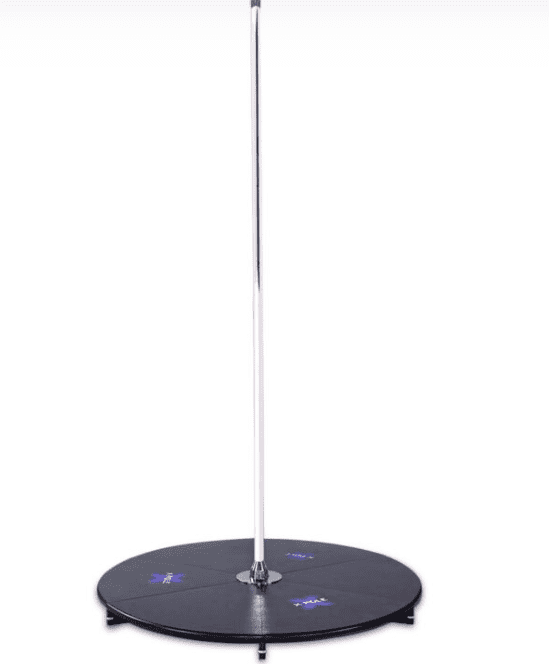Pole dance Benefits are often misunderstood, but they go beyond just learning impressive tricks. It offers a full-body workout that builds strength, flexibility, and coordination all at once. This makes it a practical and effective way to improve fitness.
I’ve found that pole dance also boosts confidence and body awareness. It challenges me physically while encouraging self-expression and discipline. If you’re looking for a unique fitness routine that combines fun and results, pole dance is worth considering.
Physical Health Benefits
Pole dance engages multiple muscle groups, enhances mobility, and improves heart function through dynamic movements and strength exercises.
Improved Strength and Muscle Tone
I noticed significant gains in upper body and core strength when I practiced pole dance regularly. It requires holding and lifting your own body weight, which targets muscles in the arms, shoulders, back, and abdomen.
This constant resistance helps increase muscle tone and definition without needing extra weights. Pole dance also engages the lower body, strengthening legs and glutes through climbing and various poses.
The combination of isometric holds and dynamic moves builds functional strength that can improve overall body control and posture.
Increased Flexibility
Flexibility is essential in pole dance, and I experienced steady improvements through consistent stretching and movement routines.
The sport stretches muscles in the hips, legs, shoulders, and back. This increased range of motion helps me execute more complex tricks safely.
Regular pole practice also reduces muscle stiffness and joint tightness, which can lower the risk of injuries during physical activity.
Cardiovascular Endurance
Pole dance incorporates fast-paced sequences and continuous motion that elevate heart rate and boost cardiovascular fitness.
I found my stamina increased as I practiced routines that combined strength, spins, and climbs. These sessions can challenge both aerobic and anaerobic systems.
Improved cardiovascular endurance supports better oxygen delivery to muscles, enhancing overall physical performance and recovery times.
Mental and Emotional Well-Being
Practicing pole dance impacts mental health by improving how I see myself and helping me manage daily pressures. It offers specific benefits like increased confidence and effective ways to unwind after stressful moments.
Boosted Self-Confidence
Pole dance challenges me to master physical skills that initially seem impossible. Each new move I learn builds a tangible sense of accomplishment. This process pushes me past doubts about my strength and body image.
The environment in classes encourages self-expression without judgment. Positive feedback from instructors and peers reinforces my efforts. This support helps me feel more comfortable in my own skin.
Physically overcoming challenges on the pole directly translates to greater confidence off the pole. I notice improvements in posture, eye contact, and presence in social situations. These changes stem from consistent practice and visible progress.
Stress Reduction and Relaxation
Pole dance requires focus on breath, balance, and movement, which naturally draws my attention away from anxiety. The physical exertion releases endorphins, chemicals in my brain that reduce stress and elevate mood.
The rhythmic, repetitive motion also serves as a form of active meditation. I find the flow between moves calming and centering, similar to yoga or tai chi.
Engaging fully in pole sessions gives me a break from mental clutter. This break helps me return to daily tasks with clearer thinking and less emotional tension. It is a practical tool for managing stress without medication or complex routines.
Social and Community Advantages
Pole dance encourages connection and mutual support, providing a positive and motivating atmosphere. It offers chances to build friendships, share progress, and celebrate achievements with others sharing similar interests.
Supportive Group Environment
In my experience, pole dance studios create a non-judgmental space where everyone supports each other’s efforts. The community focuses on encouragement rather than competition, which helps me stay motivated even through challenging moves.
I’ve seen how regular classes foster trust and respect among participants. Instructors often promote collaboration, and classmates cheer each other on during practice. This support system reduces feelings of isolation in fitness routines.
Opportunities for Social Connection
Pole dance classes provide a structured way to meet people with shared goals. I’ve made friends from diverse backgrounds by attending group sessions and workshops.
Events like showcases and social nights bring the community together outside of classes. These occasions deepen bonds and create lasting social networks connected to the practice, enriching my overall experience.
Skill Development and Creativity
I find that pole dancing sharpens both my physical and creative skills. It enhances my control over movements and offers a unique outlet for self-expression through choreography and style.
Body Awareness and Coordination
Pole dancing requires precise control over body movements. I learn to engage specific muscle groups while maintaining balance on the pole. This develops my kinesthetic sense—knowing exactly where my limbs are without looking.
Practicing spins, climbs, and holds teaches me to coordinate multiple body parts simultaneously. For example, when executing a spin, my hands, core, and legs must work in harmony to maintain rhythm and avoid injury. This improves my overall bodily coordination and spatial awareness.
Self-Expression through Dance
Pole dancing allows me to express emotions and personality through movement. I can interpret music with fluidity, combining strength and grace to create a personal style. This freedom enhances my creativity by encouraging me to invent unique routines and sequences.
I often experiment with different rhythms, poses, and transitions to reflect a mood or story. The pole serves as a prop that supports this expression, making the dance both athletic and artistic. This aspect turns physical exercise into a creative act.
Lifestyle Impact
Pole dance changes how I approach daily activity and my self-view. It encourages consistency in movement and builds confidence through physical progress and skill mastery.
Motivation for an Active Lifestyle
When I started pole dance, the challenge of learning new moves kept me engaged. The variety of techniques means I never get bored, which helps me stick to regular workouts.
Pole dancing combines strength, flexibility, and endurance training in a single session. This mix makes it more appealing than repetitive gym routines. Each class feels rewarding because I see clear improvements in my control and stamina.
I also appreciate how the social environment creates accountability. Meeting others with similar goals pushes me to attend classes consistently, reinforcing my active lifestyle beyond exercise alone.
Positive Body Image
Pole dancing changed how I perceive my body. Rather than focusing on flaws, I notice what my body can achieve.
The practice builds strength in unexpected areas, improving muscle tone and posture. As my abilities grow, so does my respect for my physical capabilities.
I’ve found that pole dance encourages me to celebrate my body’s uniqueness instead of comparing myself to others. Wearing minimal clothing for grip helps me accept my shape and skin without judgment.
This shift in mindset supports mental well-being by reducing self-criticism and promoting a more positive, realistic body image.



